This isn't an extreme drought of the sort that Texas is experiencing. It's quite normal for Vermont to have several weeks of mostly dry weather in midsummer. As is often the case, there have been at least a few thunderstorms in Vermont each afternoon, but they have been small and fast-moving.
This dry spell isn't phasing the lush green growth in meadows and the forest understory that grew after this spring's rain. It is having an effect on the Middlebury River, though. With a steep, relatively small watershed, the Middlebury River is very sensitive to weather events in the short term. In fact, it reminds me a bit of the washes and canyons in southern California, with one key difference: even during dry periods, the Middlebury River is always flowing. Most rivers and streams in southern California are dry this time of year, especially in areas with wide, cobbly or sandy riverbeds, like the part of the Middlebury River I most frequently visit.
Here's one part of the river, as it looked about a half hour ago:
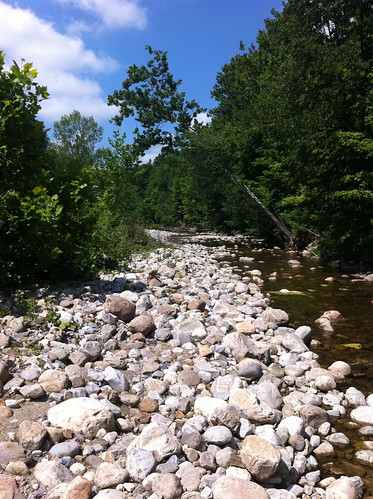
Here is how that same area looked during the May floods:
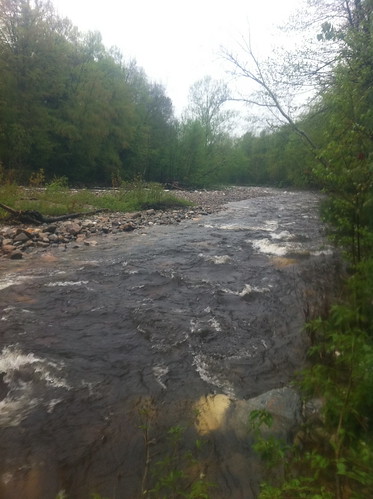
The view isn't from the exact same place, but note the leaning sycamore in both pictures. Note that this is also not the entire flow of the river, as this area has more than one river channel (typical of rivers that are full of cobbles and have a medium gradient). Even still, it really shows how the water level has changed.
The picture also demonstrates how amazingly fast cottonwoods and sycamores grow. Those large saplings to the left are the same trees as the little seedlings in the first picture! When the land you are growing on washes away in floods every few years, you have to mature and set seed fast!
More pictures below:
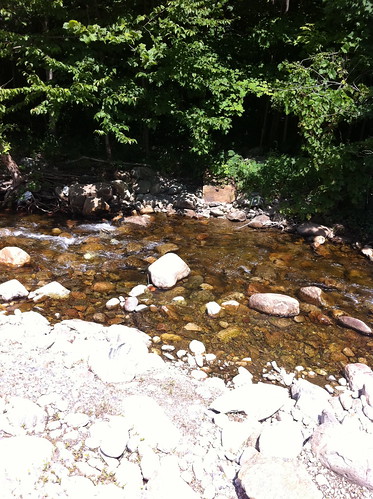
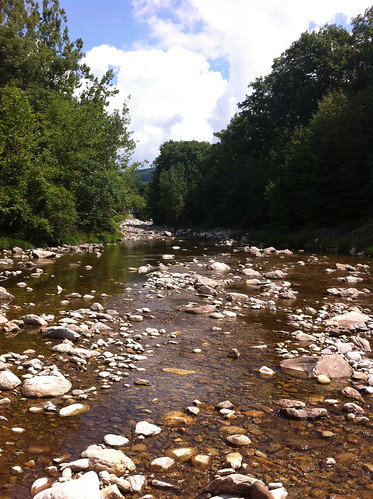
(the above view is the entire river, not just a side channel.)
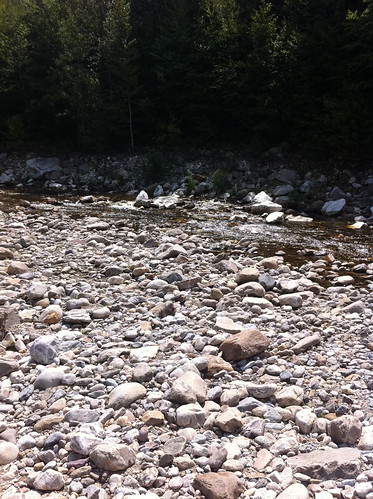
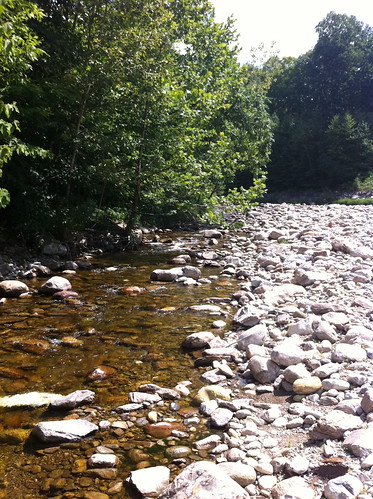
There isn't a lot of rain in the forecast for the next week or so, so this river will probably stay at this level or drop a bit more. Luckily, there is still plenty of water seeping into the river from aquifers, wetlands, and beaver ponds upstream. In a healthy watershed, these features provide water during the dry periods. In fact, some of the water in the river now undoubtedly is water that entered the upstream aquifers during the May flooding rather than rushing immediately downstream. That water was not welcome in May, but it sure is welcome now.
Contrast the Middlebury River with Panther Hollow in Pittsburgh, where I spent much of last summer. Panther Hollow has a much smaller watershed than the Middlebury River, but it probably still almost never (or never) dried up when its watershed was intact. Now that much of the watershed is covered in concrete, and much of the runoff bypasses the creek and enters a sewer system instead, Panther Hollow does occasionally dry up during the hot summer months (as seen in link above).

No comments:
Post a Comment